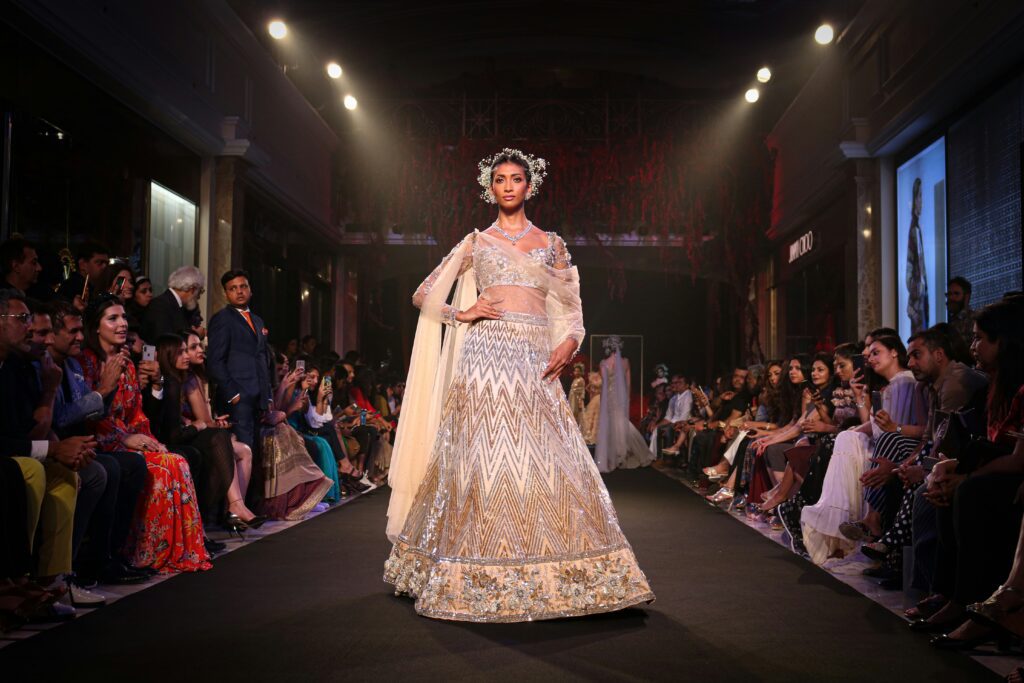
Image Source : https://1granary.com/designers-3/schools/royal-college-of-art/roberts-wood-clothes-in-motion/
In the vibrant world of fashion photography, one theme that stands out for its dynamic allure is “Fashion in Motion.” This concept goes beyond static poses and traditional settings, aiming to capture the essence of movement, energy, and fluidity within the realm of fashion. It’s about showcasing garments that not only look stunning but also come alive through the graceful movements of models, the flow of fabrics, and the interaction between fashion and its environment.
The Essence of Fashion in Motion
Fashion in motion is all about bringing clothes to life. It’s about evoking emotions and telling stories through movement. Whether it’s the swish of a flowing gown, the flutter of a scarf caught in the wind, or the decisive stride of a model on a runway, motion adds a layer of dynamism and excitement to fashion photography.
Key Elements of Fashion in Motion:
- Fluidity and Grace: The movement in fashion photography should be elegant and fluid, emphasizing the natural beauty and drape of the fabrics. This can be achieved through techniques like capturing a model mid-stride or using flowing garments that create mesmerizing patterns as they move.
- Energy and Impact: Dynamic poses and actions inject energy into the photograph, making the viewer feel the vibrancy and vitality of the fashion piece. This could involve models jumping, twirling, or interacting with their surroundings in a way that amplifies the visual impact.
- Storytelling Through Movement: Every movement in fashion photography tells a story. Whether it’s a narrative of freedom, power, grace, or rebellion, the motion of the models and garments can convey powerful messages that resonate with the audience.
Techniques for Capturing Fashion in Motion
Capturing the essence of motion in fashion photography requires skillful techniques and a keen eye for detail. Here are some techniques that photographers often employ:
- Shutter Speed Control: Adjusting the shutter speed to freeze or blur motion can create different effects. High shutter speeds freeze action, ideal for capturing crisp details in mid-air jumps or swift movements. Conversely, slow shutter speeds blur motion, adding a sense of fluidity and dynamism to the image.
- Panning Shots: Panning involves moving the camera along with a moving subject, keeping the subject in focus while blurring the background. This technique is commonly used in fashion photography to convey a sense of speed and motion, especially in outdoor or runway settings.
- Dynamic Poses and Gestures: Directing models to perform dynamic poses and gestures can convey movement and energy in a static image. This could include actions like walking, dancing, or interacting with props in a way that emphasizes the flow and rhythm of the garments.
- Environmental Interaction: Incorporating the environment into the shot adds depth and context to the motion. For example, capturing the interaction between fabric and wind outdoors or using architectural elements to complement the movement of the model can enhance the visual storytelling.
- Use of Props and Accessories: Incorporating props and accessories can enhance the sense of movement and narrative in fashion photography. For example, flowing scarves, billowing fabrics, or accessories like hats or bags can be utilized to create dynamic shapes and lines that complement the model’s movements.
- Natural Light and Movement: Mastering light can add a sense of authenticity and vibrancy to motion-filled fashion shots. Shooting during the golden hour or in dynamic weather conditions (e.g., wind or rain) can create natural movement and textures that amplify the visual impact of the photograph.
- Collaboration with Stylists and Choreographers: Working closely with stylists and choreographers can help photographers orchestrate and synchronize movements that best highlight the fashion pieces. Choreographed movements can elevate the storytelling aspect of fashion in motion, ensuring that every pose and gesture contributes to the overall narrative.
Examples of Fashion in Motion
To illustrate the concept of fashion in motion, let’s explore a few iconic examples from fashion photography history:
- Richard Avedon’s Dance Series: Renowned photographer Richard Avedon captured the essence of movement and dance in his fashion photography. His shots of models mid-twirl or leap conveyed a sense of joy and freedom, elevating the garments beyond mere clothing.

2. Vogue Italia’s Dynamic Editorials: Vogue Italia often features editorials that embrace movement and energy. Photographers like Steven Meisel have created stunning visuals where models interact dynamically with their surroundings, showcasing fashion as a living art form.

3.Runway Photography: Fashion shows are a natural showcase for fashion in motion. Photographers capture models striding down the runway, showcasing the fluidity and design details of the garments as they move.

Photo by Yogendra Singh on Unsplash
4.Elsa Schiaparelli’s Surrealist Fashion: The surrealist fashion designs of Elsa Schiaparelli often incorporated elements that defied gravity and conventional expectations of clothing. Photographers like Horst P. Horst captured these designs in ways that emphasized their whimsical and avant-garde nature, showcasing fashion as a form of artistic expression and movement.

Impact and Engagement
Fashion in motion not only captures attention but also engages viewers on a deeper level. By portraying fashion as dynamic and alive, photographers create images that resonate emotionally and aesthetically with their audience. This engagement is crucial in the digital age, where visuals that evoke emotion are more likely to be shared and remembered.
The Future of Fashion in Motion
As technology evolves, so too does the potential for capturing fashion in motion. Innovations in photography equipment, such as high-speed cameras and drone technology, offer new possibilities for creating dynamic and immersive fashion experiences. Virtual and augmented reality also present opportunities to explore fashion in motion in interactive and innovative ways, further blurring the lines between art, technology, and commerce.
In conclusion, “Fashion in Motion” represents a captivating approach to fashion photography that celebrates movement, energy, and storytelling. By embracing fluidity and dynamism, photographers can elevate fashion imagery beyond the static confines of traditional photography, creating visuals that inspire, engage, and leave a lasting impression.












